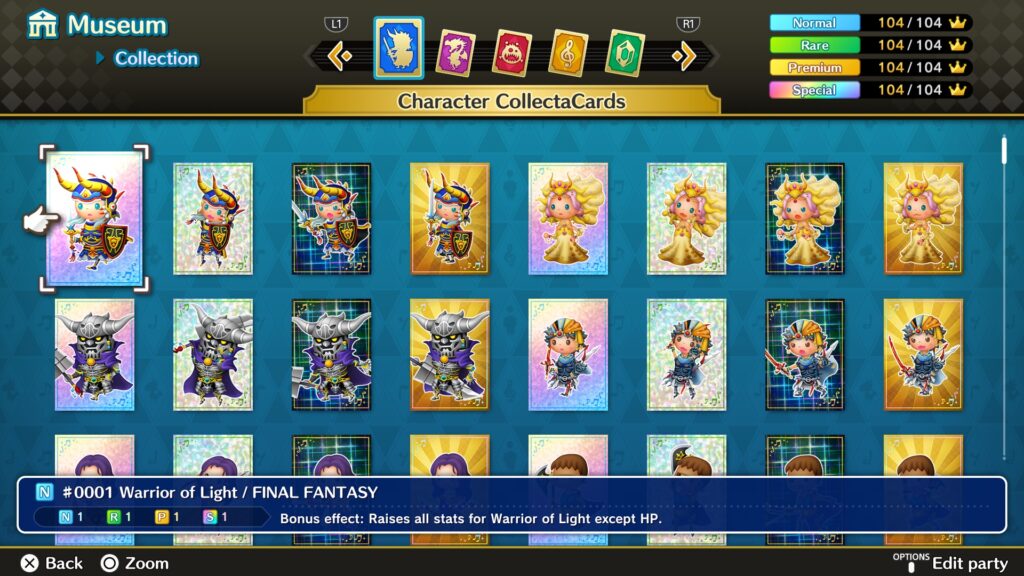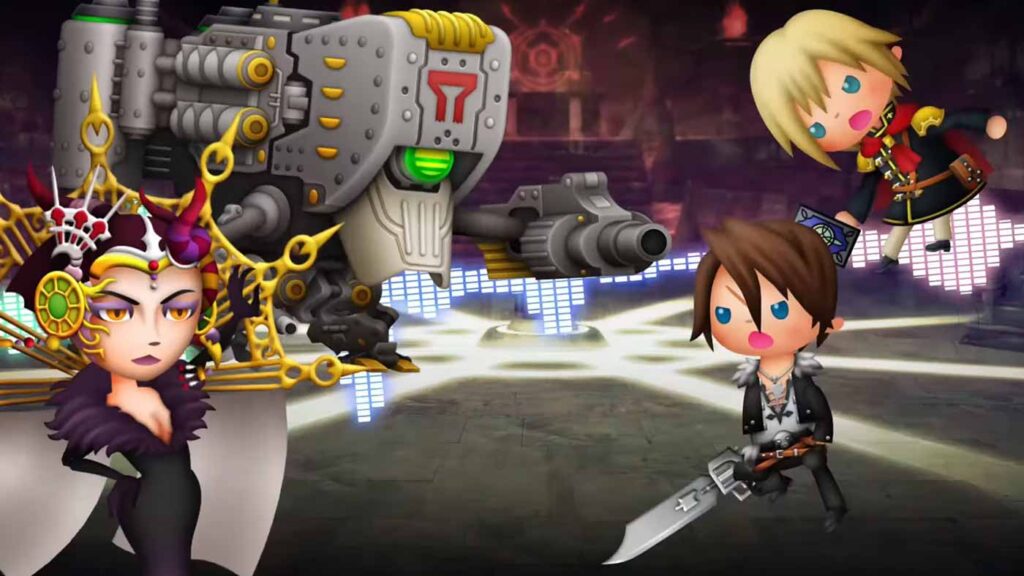The year was 1987. The U.S. Congress had convened for just the hundredth time in its history. Aretha Franklin became the first female artist to be inducted into the Rock and Roll Hall of Fame. Astronomers at the University of California witnessed the birth of a galaxy for the very first time.
Closing out the year, a strange role playing game dropped for the still growing Nintendo Entertainment System from a then little known developer known as Square. It was quite unlike anything else seen on the fledgling console to this point. It featured the raw emotional power and compelling, world spanning narrative crafted by names such as Sakaguchi and Terada. Its gameplay flowed like a well run campaign from a multi part Dungeons and Dragons module.
The unique gameplay was accompanied by a captivating soundtrack. There was the main theme, full of optimism and adventurous spirit. There was the cozy and inviting theme of the small town of Coneria (not ever going to call it Cornelia) and its more regal castle. There was the imposing Earth Cave, the dangerous Gurgu Volcano (rechristened Mount Gulg) and the mysterious Sunken Shrine, all wonderfully represented. Composed and arranged by music store faithful Nobuo Uematsu, who would go on to compose exclusively for the next seven games in the series. That game, of course, was Final Fantasy.
At its most basic level, the core series of Theatrhythm games are nothing if not a musical tribute to the vast multi-layered worlds of Final Fantasy. As a sequel to 2008’s Theatrhythm: Curtain Call and port of 2016’s arcade standout All Star Carnival, Final Bar Line boasts, when all the eventual content packs are released, over five hundred individual tracks spanning almost all of Square’s game worlds.

If you’re hoping for an abundance of game modes, you might be disappointed to see only three at the main screen, these consisting of the ambiguously titled “Series Quests,” “Music Series,” and “Multiplayer.” Series Quests is the main draw of the game and deals with musical journeys through all of the main Final Fantasy titles as well as many of their spinoffs. Music Series is simply a sortable listing of all of the tracks you’ve unlocked and can play through and Multiplayer is probably self explanatory.
Your introduction to the game will probably be Series Quests. This mode features a listing of Final Fantasy games, one through fifteen, as well as offshoots such as Mystic Quest, Crystal Chronicles, Dissidia,Möbius, Chocobo’s Dungeon, etc just to name a few. There’s also an overabundance of Final Fantasy VII related content for players that like their fantasy more steeped in science fiction. You get music from the original game, the recent remake, Advent Children, Crisis Core, Last Order, plus another category with remixed versions of the important themes as well. You’ll think you’ve died and gone to the Gold Saucer.
Selecting a title brings you to the first stage in that series. Stages are either Battle Music Stages (BMS) or Field Music Stages (FMS). You get encounters with monsters in each, but the BMS stages are battle focused, while the field music stages are more akin to a nice stroll through the countryside accompanied by a relaxing music track.
As in most rhythm games, the mechanics involve hitting triggers, the main types being red tap triggers which just require a button tap at the right time and green hold triggers, which have you holding down a note until it comes to its end. The easiest difficulty involves the fewest notes and lowest speeds (though it still seems a bit faster than Curtain Call’s easiest difficulty). Perfect timing earns you a rainbow critical, near perfect timing gets you a regular critical and down from there are great, good and bad timings and just plain misses.

There are several incentives for getting rainbow critical hits, outside of score boosting. One of the main ones is that rainbow critical strikes also allow your characters to to the most damage they can with their attacks. This allows you to eliminate enemies faster. Rainbow criticals also allow your characters to activate their abilities sooner, as most characters have prerequisites for their abilities that involve a number of successful strikes.
When discussing rhythm games, one of the main concerns is always accessibility. Final Bar Lineoffers an increased accessibility for beginners and experienced rhythm gamers alike with per song difficulty options of basic, expert, supreme and many tracks have an ultimate difficulty as well. There’s also a helpful slider in the options menu that can adjust the overall scrolling speed of triggers from -0.5 to +2. Finally, there’s a simplified controller option which reduces the variety and number of notes displayed, eliminating the need to follow hold triggers up and down manually as well as directional triggers.
Each title offers a variety of mini versions of characters from each game that you can add to your four person party, level up and teach abilities to. Characters fit into a number of different jobs, such as physical type characters like Noctis (FFXV) and Tidus (FFX), magic type characters such as Vivi (FFIX) and Terra (FFVI), defender type characters with increased hit points and abilities focused on defending the party include Cecil (FFIV) and Snow (FFXIII).
Rounding out the four core jobs is healer, examples of which include Aerith (FFVII), Vanille (FFXIII), and Princess Sarah (FFI). There are also hunters like Yuffie (FFVII) and Zidane (FFIX) whose abilities assist in finding rare items and summonstones. The two jobs not seen in the demo are Summoner (Yuna) and Support (Mog). Most characters can learn abilities they have in their respective games as well, such as Zidane’s Thievery, Tidus’ Blitz Ace and Balthier’s Fires of War. With most titles featuring a number of characters that you can unlock, you’ll quickly amass a plethora of characters to choose from.

As far as the musical journeys into each title, most are excellent and will no doubt evoke memories of games once played and character journeys once traveled, however, there are some odd design choices. The aforementioned “Zanarkand” from Final Fantasy X, arguably one of the most recognizable themes in the series (partly due to the fact that it’s the first thing you hear when starting up the game) is notably absent from the FFX main series.
Instead, its relegated to the “Music Series” option in the game where you can play any track you unlocked previously, as well as any content packs. Also, “Zanarkand” is one of the 27 “special tracks” included in the deluxe edition of the game, the base edition of the game doesn’t feature this song at all. It seems a strange choice that one of the seminal themes in the series should seem to be something of an afterthought. This isn’t just limited to “Zanarkand,” however, as “Memories of Waves and Light,” the lovely piano theme from Final Fantasy X-2, is also relegated to secondhand status and is similarly a part of the 27 songs that are included in the deluxe edition. “Melodies of Life” from FFIX shares this fate as well.
One thing that would have been a nice addition, even if tossed nonchalantly into the Music Series section of the game, would have been the remixed soundtrack of Final Fantasy Origins for the Playstation. There are some great tracks in there and adding it to the game would allow players to appreciate its more modern take on the original themes.
Visually, there have been quite a few changes since the days of Curtain Call. Gone are the closeup shots of your party members when beginning a song, replaced with the more modern aesthetic of a vinyl album cover, with a featured character from the game posing reflectively or in a mid battle pose. It’s a nice change, but we do miss the overall party shots before a song.
Another large change in the visual department is the retooling of EMS or Event Music Stages. No longer part of the main series of games, and found in the music series department, the once unique EMS stages featured stationary triggers on a rollercoaster like path, often eventually swirling into more minuscule circular patterns and speeding up as the song neared completion, while a cutscene plays in the background, mostly obscured by the musical interface. You can even extend the song by correctly hitting the right triggers. These were such a departure from anything else seen in the stages in the game that they are always a welcome addition when encountered.
The EMS stages in Final Bar Line, comparatively, are simply reworked Battle Music Stages. Enlarged and played vertically instead of horizontally, while a cutscene plays in the background, it’s a bit sad to see the uniqueness of the EMS stages traded in for a simpler, perhaps more audience-friendly format. The developer has stated that they did it this way so the cutscene running in the background could be more easily viewed, but that seems a large price to pay for the loss of one of the more distinctive and even quirky aspects of the series.

In terms of the songs themselves, there’s some great visual effects going on in many of the stages. The lava flowing through caves and down fiery chasms in Mt Gulg and several other stages is a rare but lovely vista to behold. “Liberi Fatali” from FFVIII is set amidst a flowery field, while “Waltz for the Moon” features a night sky with fireworks. FFVI’s “Terra’s Theme,” has your party traversing snow filled forests and icy landscapes, evoking memories of traveling through Narshe in the early part of that game. One of the more visually exciting titles in the game, however, comes from Final Fantasy XIV.
One of the longer titles to play through, Final Fantasy XIV contains music from the base game as well as several expansions. Where the title really shines is in its visual presentation, however. Of particular note are the battles with the Primals, which are extremely faithful to the battles in the actual games. For example, Ifrit’s battle features the ring of dancing flames watched over by a glowing eclipse while smoke rises into the night sky.
Titan’s arena features the eerily glowing scorched earth surrounded by rock, his massive defense is portrayed by the stage limitation of your party only being able to do half their normal damage. The often frenzied Leviathan battle is simulated by the super fast trigger speed amidst a pulse pounding heavy metal-esque theme. Garuda may look nothing like her in game counterpart but her stage is a pretty good replica, with the Stonehenge like monuments and swirling vortex above. It’s little details like this that go a long way towards capturing the feel of these battles and overall game as well.
With a sprawling catalog of excellent soundtracks, and charming visuals that capture the feel of each game and a constant drip of in-game rewards, Final Bar Line succeeds as a rhythm game and a showcase of some of the best music that the industry has given us. If this is to be the last entry in the Theatrhythm series, as per the developer, then this truly is a bittersweet symphony. Some of the best music in Square’s catalog is up on display and even casual fans of rhythm games or Square’s titles will undoubtedly find something to like here.





